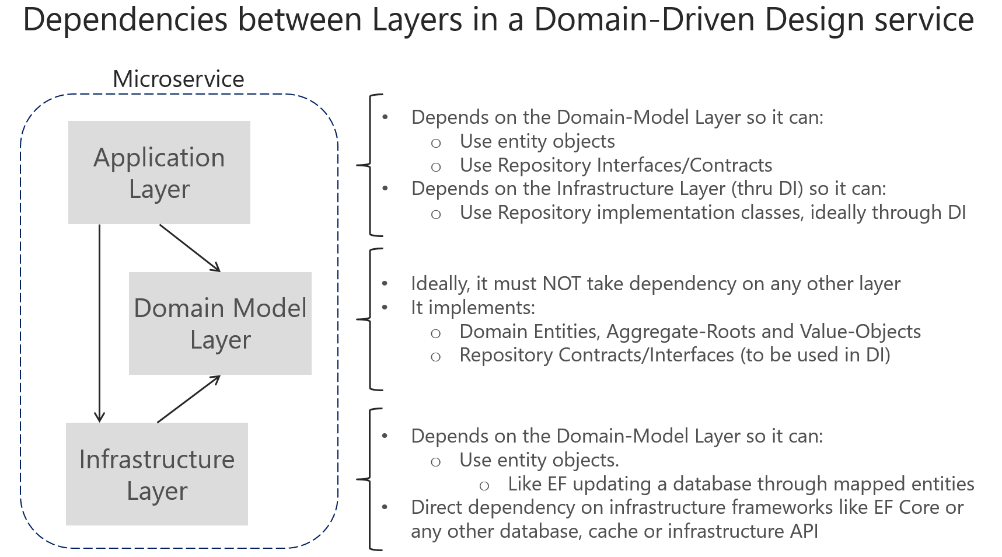Microservices DDD Design Pattern
Domain-Driven Design (DDD) is an approach to software development that focuses on understanding and modeling the domain of a problem to create a shared understanding between technical and non-technical stakeholders. DDD emphasizes collaboration and communication between domain experts and developers to build a rich and accurate model of the problem domain.
Here are some key patterns in Domain-Driven Design:
In Domain-Driven Design (DDD), entities and value objects are both core building blocks used to model domain concepts, but they serve different purposes and have different characteristics.
Entity
An Entity is a distinct, identifiable object that has a continuous existence. It is defined by its identity, which remains constant throughout its lifecycle.
Value Object
A Value Object is an object that describes some characteristic or attribute but has no conceptual identity. They are immutable and can be shared.In C#, you can implement Value Objects as immutable classes. Value Objects represent concepts that don't have an identity;they are defined by their attributes or properties. They're meant to be small, self-contained, and immutable.
Aggregate:
An Aggregate is a cluster of associated objects treated as a single unit. One of the objects within the aggregate is designated as the root, and it is responsible for ensuring the consistency of the whole aggregate.
Repository:
A Repository is responsible for providing access to aggregates. It acts as a collection-like interface for querying and saving aggregates.
Service:
A Service is a stateless operation that performs a specific task. It is not an entity or value object but represents an action or operation.
Domain Events:
Domain Events represent something that has happened in the domain. They are used to communicate changes and trigger reactions in other parts of the system.
Aggregate Root:
The Aggregate Root is the primary access point to an aggregate. It ensures the integrity of the aggregate by controlling access to its parts.
Bounded Context:
A Bounded Context defines the scope in which a particular model is valid. It establishes explicit boundaries in which a model and its terms have specific meanings.Ubiquitous Language:
Ubiquitous Language is a shared language between developers and domain experts. It ensures that everyone involved in the project speaks the same language when referring to the domain concepts.
Strategic Design:
Strategic Design involves organizing the codebase and defining relationships between bounded contexts to ensure scalability and maintainability.
=>Product =>Order =>Customer =>Cart =>Payment =>Shipping




Comments
Post a Comment